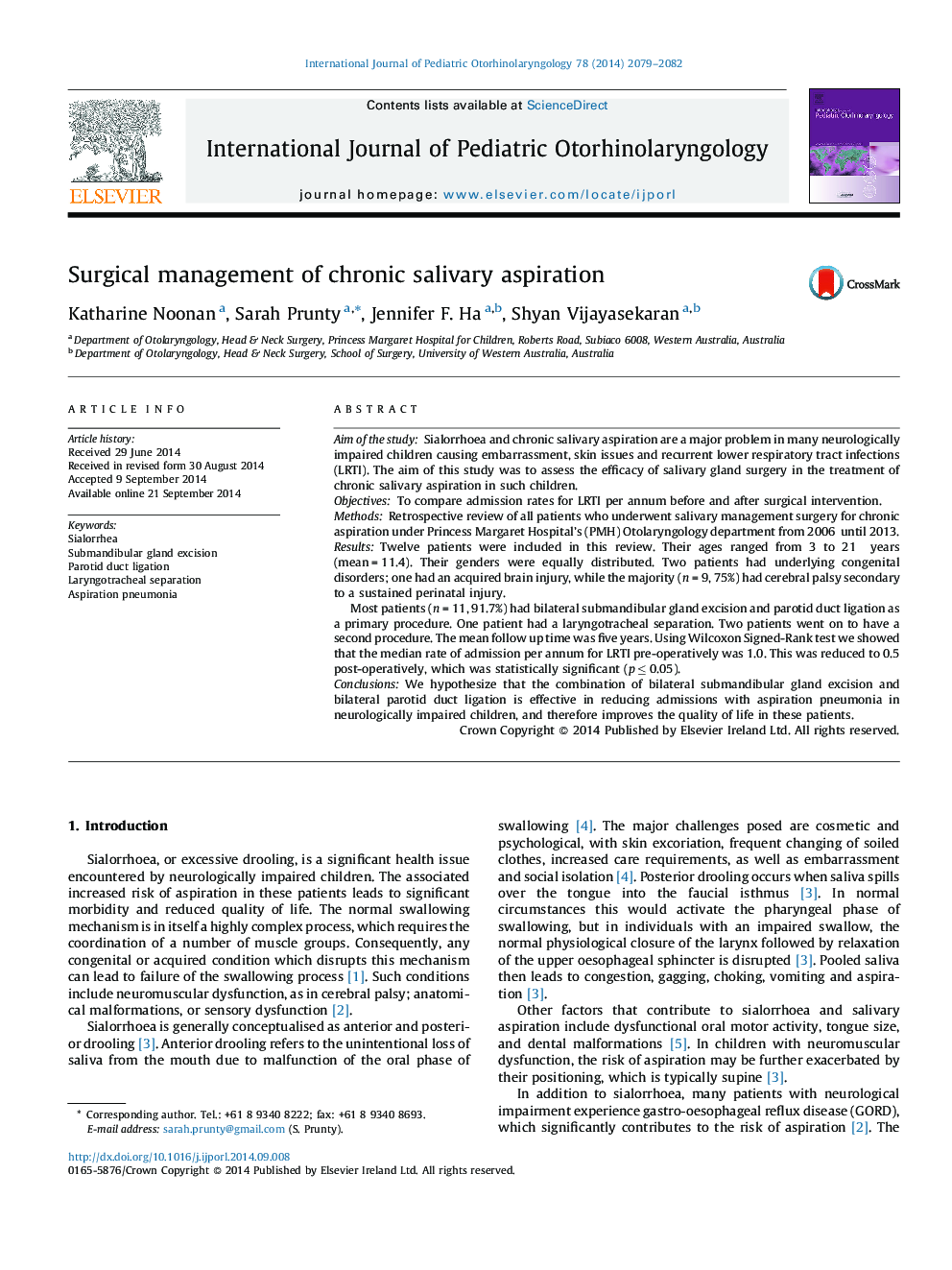| Article ID | Journal | Published Year | Pages | File Type |
|---|---|---|---|---|
| 4111785 | International Journal of Pediatric Otorhinolaryngology | 2014 | 4 Pages |
Aim of the studySialorrhoea and chronic salivary aspiration are a major problem in many neurologically impaired children causing embarrassment, skin issues and recurrent lower respiratory tract infections (LRTI). The aim of this study was to assess the efficacy of salivary gland surgery in the treatment of chronic salivary aspiration in such children.ObjectivesTo compare admission rates for LRTI per annum before and after surgical intervention.MethodsRetrospective review of all patients who underwent salivary management surgery for chronic aspiration under Princess Margaret Hospital's (PMH) Otolaryngology department from 2006 until 2013.ResultsTwelve patients were included in this review. Their ages ranged from 3 to 21 years (mean = 11.4). Their genders were equally distributed. Two patients had underlying congenital disorders; one had an acquired brain injury, while the majority (n = 9, 75%) had cerebral palsy secondary to a sustained perinatal injury.Most patients (n = 11, 91.7%) had bilateral submandibular gland excision and parotid duct ligation as a primary procedure. One patient had a laryngotracheal separation. Two patients went on to have a second procedure. The mean follow up time was five years. Using Wilcoxon Signed-Rank test we showed that the median rate of admission per annum for LRTI pre-operatively was 1.0. This was reduced to 0.5 post-operatively, which was statistically significant (p ≤ 0.05).ConclusionsWe hypothesize that the combination of bilateral submandibular gland excision and bilateral parotid duct ligation is effective in reducing admissions with aspiration pneumonia in neurologically impaired children, and therefore improves the quality of life in these patients.
